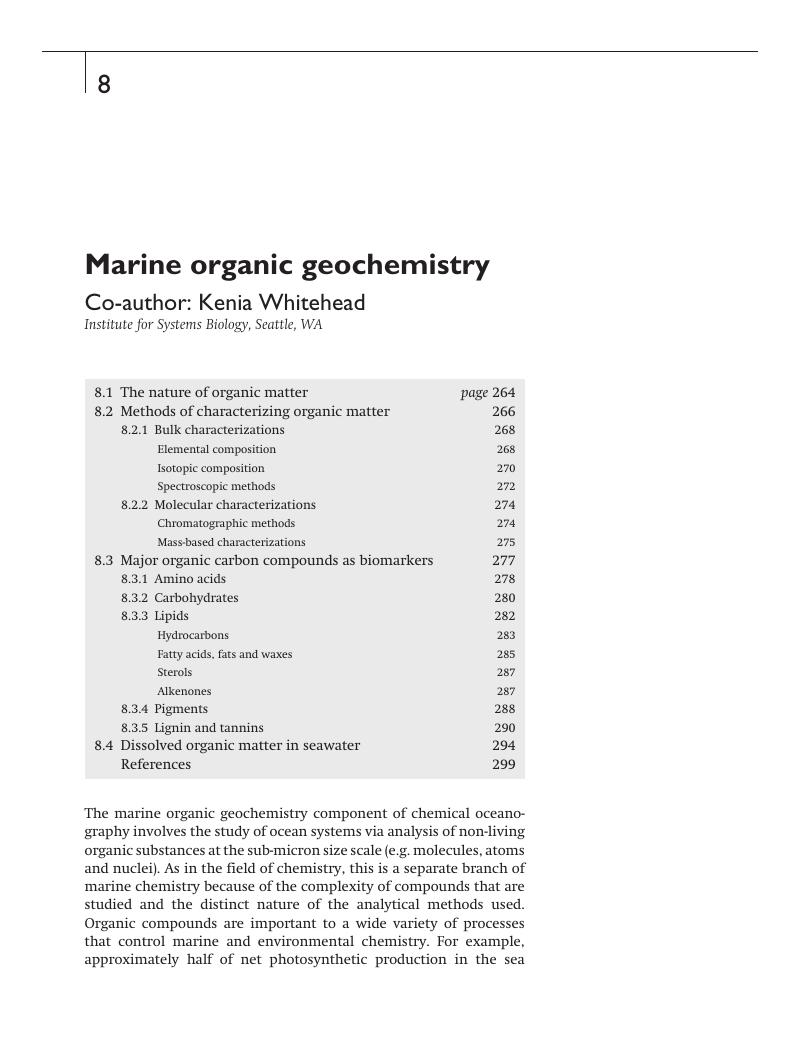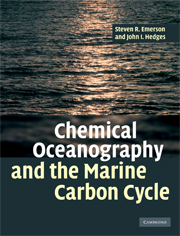Book contents
- Frontmatter
- Contents
- Preface
- Acknowledgements
- I Introduction to chemical oceanography
- II Advanced topics in marine geochemistry
- 8 Marine organic geochemistry
- 9 Molecular diffusion and reaction rates
- 10 Gases and air–water exchange
- 11 The global carbon cycle: interactions between the atmosphere and ocean
- 12 Chemical reactions in marine sediments
- Index
- Plate section
- References
8 - Marine organic geochemistry
Published online by Cambridge University Press: 05 September 2012
- Frontmatter
- Contents
- Preface
- Acknowledgements
- I Introduction to chemical oceanography
- II Advanced topics in marine geochemistry
- 8 Marine organic geochemistry
- 9 Molecular diffusion and reaction rates
- 10 Gases and air–water exchange
- 11 The global carbon cycle: interactions between the atmosphere and ocean
- 12 Chemical reactions in marine sediments
- Index
- Plate section
- References
Summary

- Type
- Chapter
- Information
- Chemical Oceanography and the Marine Carbon Cycle , pp. 261 - 302Publisher: Cambridge University PressPrint publication year: 2008
References
- 5
- Cited by



